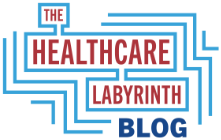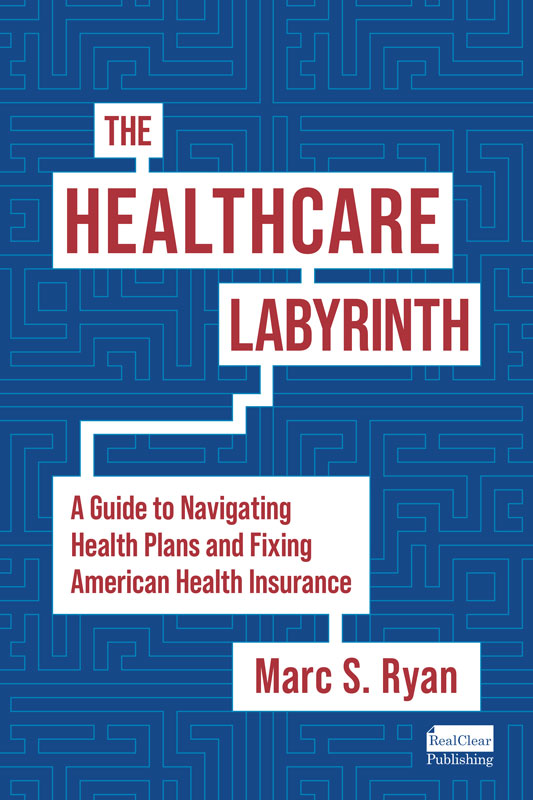With so much going on in the health insurance world, I thought it would be interesting to profile some of the largest insurers and discuss some of their priorities/activities. I picked the seven largest insurers owned by for-profit publicly traded companies. Collectively, they cover about 200 million people, or 60% of the U.S. population. Collectively, their revenues are over $1.25 trillion annually.
While this is not meant to be an exhaustive review of financial information or advice on stock purchases, I combed investor relations filings and sites as well as the internet for this information.
As you will see, some are focused a bit on diversification from insurance alone and strengthening services units. Others continue to be more pure-play insurers.
A few points:
- The insurers are in order based on Q3 2023 membership, not 2022 revenue.
- I am counting core healthcare lives. “Core” to me is medical policies in the commercial, federal employees, military, Medicaid managed care, and Medicare Advantage (MA), along with Medicare Part D plans and Medicare Supplement. I do not count various specialty or ancillary policies. I do not count international lives.
- Margins for these businesses can range from 4% to 6% on average over time. Those with more Medicaid lives and retail businesses may have slightly lower returns, while those with heavy concentrations of commercial and MA may have higher.
- Insurance units’ medical loss ratios (MLRs) can be in the low 80s (%) for those with commercial and MA and in the high 80s for those with higher concentrations of Medicaid lives. We expect that insurers will see increases in their MLRs in the coming quarters or year because utilization is returning to normal post the COVID pandemic, inflation is increasing, and MA is particularly seeing rises in medical expenses.
- Below, I mention insurers will have Medicaid enrollment losses due to Medicaid redeterminations. In April, regular Medicaid eligibility was reintroduced after a COVID pandemic law temporarily lifted regular rules and no one could be disenrolled once covered. Each person will go through a redetermination of eligibility. The process will last about 15 to 18 months. We are seeing huge Medicaid enrollment losses due to this. About 14.3 million have lost Medicaid coverage so far, largely on procedural grounds. Some are gaining coverage back in Medicaid later, while others move to other forms of coverage, including the Exchanges. Many have become uninsured. As such, insurers will see Medicaid membership losses and those in the Exchanges will see some gains.
Here goes:
United Health Group
2022 Revenue: $324 billion
Q3 2023 Membership:
Commercial – 27.3 million
Medicaid managed care – 8.0 million
Medicare Advantage – 7.6 million
Medicare Supplement – 4.3 million
Medicare Part D PDP – 3.3 million
TOTAL: 50.5 million
Highlights: United Health Group is very diversified between its insurance and services business. It owns one of the big three PBMs. Its Optum services unit is strong. Optum is a huge focus for growth. Optum includes OptumRx PBM as well as numerous services businesses, which serve United as well as other insurers. About 45% to 50% of the overall company’s margin comes from Optum. Optum has a focus on acquiring physician groups to tie closely to the insurance entity.
United is the biggest Medicare Advantage player. Given its size and reach, it is forecasting slower MA growth than in the past, but it has been a powerhouse on Star and enrollment overall. It is the king of Medicare Advantage because of its branding relationship with AARP on both MA and Medicare Supplement. It will be hit with Medicaid redetermination enrollment losses.
Elevance Health (formerly Anthem)
2022 Revenue: $156 billion
Q3 2023 Membership:
Commercial – 31.7 million
Medicaid managed care – 11.0 million
Medicare Advantage – 2.1 million
Federal Employees – 1.6 million
Medicare Supplement – 0.9 million
Medicare Part D PDP – 0.3 million
TOTAL – 47.6 million
Highlights: Elevance Health is more of a pure-play insurer, with aspirations to grow its services unit. It does not own a substantial PBM right now. Elevance has been a strong commercial player, but has been investing in both Medicaid and Medicare Advantage. It has struggled on the Medicare Advantage Star front. It has begun to build a services entity, known as Carelon. It will include a PBM and other service entities. Elevance will be hit by Medicaid redetermination enrollment losses.
CVS Health
2022 Revenue: $322 billion
Q3 2023 Membership:
Commercial – 18.3 million
Medicare Advantage – 3.4 million
Medicaid managed care – 2.6 million
Medicare Supplement – 1.4 million
Medicare Part D PDP – 6.1 million
TOTAL – 31.8 million
Highlights: CVS Health has three areas from which it makes money: insurer Aetna, its PBM and related businesses, and its pharmacies and related. It owns one of the big three PBMs, Caremark. Its PBM and related revenue is the biggest, with pharmacy and related next, and Aetna. Income roughly is spread across the units. CVS is focusing on building out primary care and other investments. Aetna had a huge turnaround on Star scores and says it will have a huge increase in MA enrollment for 2024. It will be hit by Medicaid redetermination enrollment losses. CVS lost big insurer Centene to Cigna’s ESI PBM on 1/1/2024.
Centene Corporation
2022 Revenue: $145 billion
Q3 2023 Membership:
Medicaid managed care – 15.2 million
Medicare Part D PDP – 4.5 million
Exchange – 3.7 million
Medicare Advantage – 1.3 million
Tricare – 2.8 million
Commercial – 0.4 million
TOTAL – 27.9 million
Highlights: Centene is more of a pure-play insurer, with a focus on government programs – Medicare Advantage, Part D, Medicaid managed care, and Exchanges. It was formed from the merger of Centene (strong in Medicaid) and WellCare (strong in Medicare). It does not own a PBM or have a large services business. It recently moved its lives to PBM ESI, under Cigna. It will be hit by Medicaid redetermination. As one of the biggest exchange players, it will gain there. It has battled low Star scores in Medicare Advantage.
The Cigna Group
2022 Revenue: $181 billion
Q3 2023 Membership:
Commercial – 16.0 million
Medicare Part D PDP – 2.5 million
Exchange – 0.9 million
Medicare Advantage – 0.6 million
Medicare Supplement – 0.5 million
TOTAL – 20.5 million
Highlights: Cigna is strong in commercial and has a growing services business called EverNorth. Under EverNorth, it owns one of the big three PBMs, ExpressScripts (ESI). About 55% to 60% of its margin comes from the services entity. Cigna is looking to grow the entity more. Unlike other big players, it has sold off its Medicaid line and may shed its Medicare Advantage lives (in part due to enrollment and Star challenges). This would be to concentrate on commercial insurance lives and to grow EverNorth. ESI won the Centene lives from Caremark as of 1/1/2024. It should gain some on the Exchange due to the Medicaid redetermination enrollment losses in the nation.
Humana
2022 Revenue: $93 billion
Q3 2023 Membership:
Medicare Advantage – 5.9 million
Tricare/Military – 5.9 million
Medicare Part D PDP – 2.9 million
Medicaid managed care – 1.3 million
Commercial – 0.7 million
Medicare Supplement – 0.3 million
TOTAL – 17.0 million
Highlights: Humana is a pure-play insurer, with a focus on government programs. Its major focus is on Medicare Advantage and Part D. It is the second largest Medicare Advantage provider, behind only United. It has grown well in MA and sustained good Star scores. It is forecasting some lower growth given its overall size. It is growing its Medicaid line as well and could be hit by some lower membership due to Medicaid redeterminations. It will shed its commercial line. While it does not concentrate on a services unit per se, it has bought major senior-related assets, including physicians and senior-related providers. It does so to strengthen its core insurance business. It does not have a major PBM.
Molina Healthcare
2022 Revenue: $31 billion
Q3 2023 Membership:
Medicaid managed care – 4.8 million
Medicare Advantage – 0.3 million
Exchange – 0.3 million
TOTAL – 5.4 million
Highlights: Molina suffered some major financial difficulties some years ago and continues to recover. It is a pure-play insurer. It does not have a major services entity or PBM. It is focused on Medicaid managed care, where it will see lower membership due to Medicaid redetermination enrollment losses. It is growing its Medicare Advantage line due to the opportunity with dual eligibles.
#healthcare #healthcarereform #healthinsurance #commercial #medicaid #medicareadvantage #pdp #coverage #insurers #united #elevancehealth #cvshealth #aetna #centene #cigna #humana #molina #pbms #managedcare
— Marc S. Ryan





